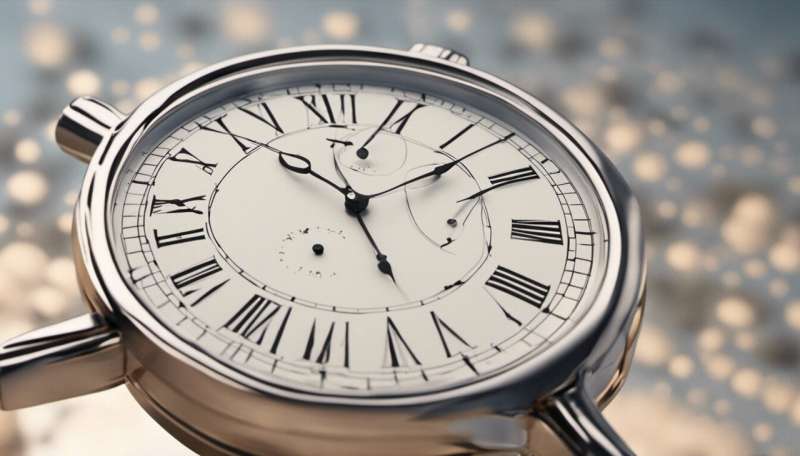The world's slowest clock

(PhysOrg.com) -- National Physical Laboratory is well known for having some of the fastest and most accurate clocks in the world, but now new research with the Scottish Universities Environmental Research Centre has led to the calibration of one of the world's slowest ‑ the argon-argon clock.
The argon-argon clock is used to date rocks and estimate the time of geological events that occurred as far back as 4.5 billion years ago, when the Earth was formed. The new research will increase the accuracy of these estimates by correcting measurements of argon first made in the 1950s by American physicist Alfred Nier.
The argon-argon clock works by measuring the ratio of the amount of radioactive potassium in a sample of rock to the amount of its decay product, argon. The older a rock is, the more potassium has decayed and the more argon is found in the rock.
The effect of the new research varies from one rock type to another, but could mean up to a 1.2% difference in a rock's age from the original calculation, which is a significant amount, e.g. 1.2 million years in a rock 100 million years old.
The discovery came about as part of an unrelated NPL research project to measure the Boltzmann Constant, which links the magnitude of a degree Celsius to the amount of energy held by the molecules of a substance. To measure the Boltzmann Constant researchers needed to build the world's most accurate thermometer which works by measuring the speed of molecules in argon gas. But to understand their results they had to measure the isotopic composition of their samples of argon gas.
After searching the world for collaborators, NPL enlisted the help of Darren Mark and Fin Stuart of the Natural Environment Research Council's Argon Isotope Facility (AIF). Darren and Fin are the 'parents' of ARGUS – the most accurate mass spectrometer for argon isotope measurements in the world. During the course of their research, they came across an unexpected result. The measurements they made using ARGUS were so precise that they allowed the team to draw conclusions about the isotope distribution of atmospheric argon. This is used to calibrate noble gas mass spectrometers and so is responsible for the calibration of all 'argon-argon' dating that takes place throughout the world.
The results show that Alfred Nier, a great American physicist of the 1950s, was slightly in error with his measurements of argon and the data revealed that the correct measurement was achieved in 2006 by researchers in South Korea and North America.
Michael de Podesta, who led the research at NPL, said: "This work shows the power of precision measurement. Many people think precision measurement is just about adding another decimal place to a number. But it's far more exciting than that. It's more like getting a sharper lens on a camera. It allows us to see the world more clearly and, when we look closely, we are never quite sure what we will find."
More information: Read the full research paper in Geochemica et Cosmochimica Acta – the journal of the Geochemical Society and the Meteoritical Society.
Provided by National Physical Laboratory

















